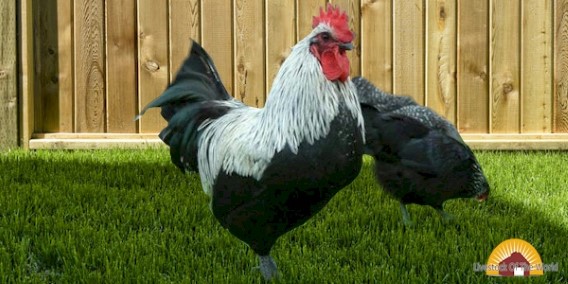Norfolk Grey
chickens are a dual-purpose that originated in Norfolk, England, around 1910.
They were
originally created by Frederick W Myhill of Hethel, Wymondham under the name
Black Maria. It is believed that he used Birchen English Game and possibly
Duckwing Leghorns. The game inclusion would account for the excellent meat
ability and the Leghorn for the laying ability.
During the
First World War, they were allowed to free range while Myhill had departed for
military service. On his return, he discovered that the birds had cross bred
with other breeds and the strain had to be recreated. In 1925, Myhill applied
to the Poultry Club of Great Britain in 1925 to have the name changed to
Norfolk Grey as the breed did not gain popularity under Black Maria.
They came
close to dying out in the early 1970s but a private flock containing 4 birds
was found in 1974 and the breed was revived. Currently they are a rare breed
and are considered to be at risk by the Rare Breeds Survival Trust.
Norfolk Great
are considered to be a heavy breed but do not grow as large as many other heavy
breeds. They have a single comb and a red face with black eyes while the legs
are slate or black. Their plumage is attractively marked and the males have a
beautiful silver hackle striped with black as is the neck, back, saddle and
wing feathers, while the rest of the plumage is black. The hen's hackle is
similar to the roosters but they have an otherwise rich black feathering all
over apart from the throat which is silver laced.
They are
excellent forager and they do well when free ranging. The males reach 3.2 to
3.6 kg (7.1 to 7.9 lb) while the female reach 2.25 to 2.7 kg (5.0 to 6.0 lb).
They can
produce a good-sized carcass for meat production if they are allowed to mature
slowly and are regulars at shows where they win prizes. Roosters make good
table birds if allowed to mature slowly; however, their meat is more gamey than
most other common breeds.
Hens start
laying around 1 year old and lay approximately 150-220 tinted (pale brown),
medium-sized eggs per year and they even continue to lay throughout the winter.

